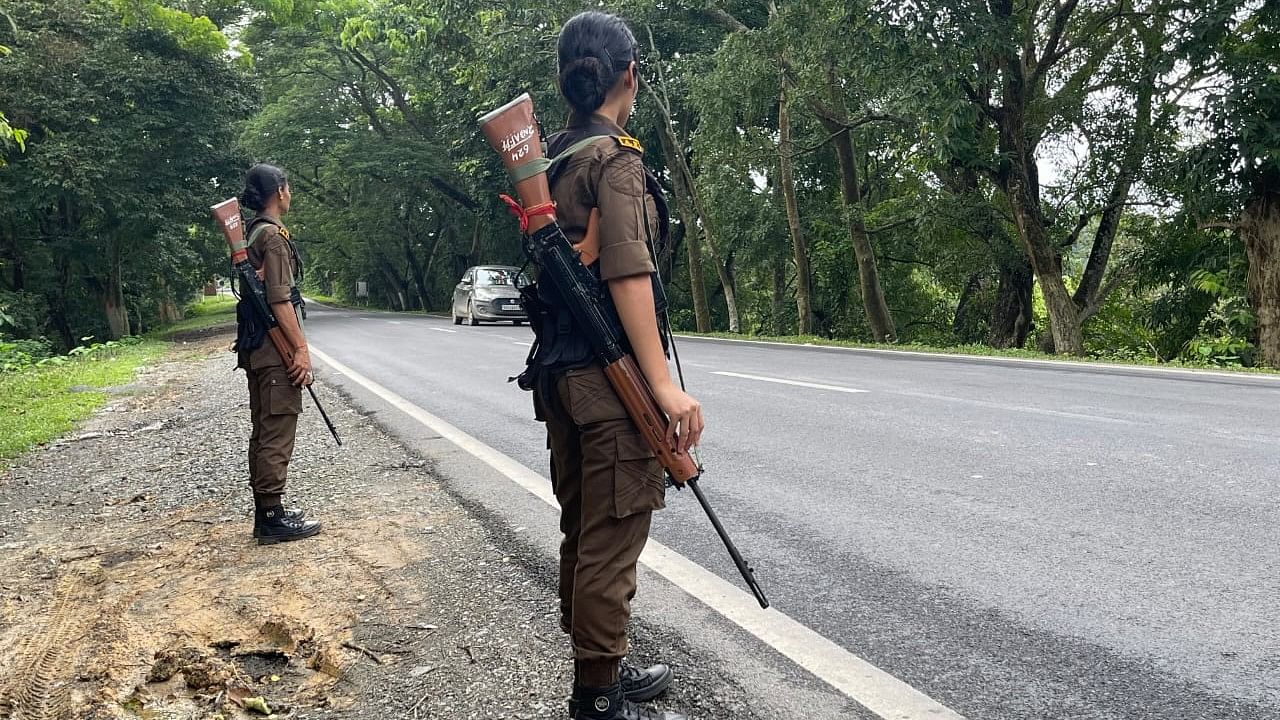
The forest cadets guarding the highway stretch in Kaziranga.
Photo credit: Kaziranga National Park and Tiger Reserve.
Guwahati: Wild animals being run over by speeding vehicles on the stretch of NH-37 passing through Kaziranga National Park in Assam has become a worry during floods almost every year.
The rhino hub park, this time, however, reported the lowest of two such mishaps so far even as it witnessed its worst flood since 1988. Thanks to a multi-pronged strategy that included a human chain formed by forest guards along the stretch of the highway that passes through the national park.
"The wild animals die in vehicle hits while crossing the highway to flee the flooded areas and for shelter on the hills of Karbi Anglong district on the other side. It was observed that during flood, the animals take the non-corridors too to flee the flood. So for the first time we deployed around 100 cadets of Dergaon-basd 3rd Assam forest battalion to form human chains along the 15km stretch of the highway to prevent death of animals in vehicle hits. Our effort yielded results as only two such incidents happened this year so far," director of the park, Sonali Ghosh told DH. "The cadets manned the stretches round the clock in batches," she said.
In 2020, 17 wild animals, mainly hig deers, were mowed down by vehicles on the stretch of the highway during floods.
Apart from speed restrictions, the park authorities used drones and animal sensors to prevent such mishaps. Various departments, especially police, district administration, veterinarians, local community organizations, NGOs, local media and NSS student volunteers also actively supported and participated in our efforts, Ghosh said.
The 1,300-odd square kilometer national park and tiger reserve this time recorded the worst floods since 1988. The park clocked water level of 87.47 meters on June 1, breaking its earlier high flood level of 87.35 meters on June 12 in 2020.
Deaths in flood
The park, however, registered the death of 212 wild animals including 10 prized one-horned rhinos due to the flood while 143 animals were rescued by forest staff. A total of 195 animals drowned in flood water till Monday (June 15), said a bulletin issued by the park.
The death of the animals have become a worry but conservationists say that flooding is necessary to keep the park's ecology and the animal life cycle going.
"The death of wild animals including rhinos during floods in Kaziranga and some other parks may look bad, but this is the natural selection process of survival of the fittest in the wild. Without annual floods, these floodplain ecosystem won't be able to sustain wild animals, including rhinos as it energises the ecosystem in Kaziranga or any other rhino bearing areas along the Brahmaputra river," wildlife biologist and CEO of Aranyak, a biodiversity conservation group in Assam, Bibhab Kumar Talukdar, said.
Some key figures
Flood water level: 87.47 meters on June 1
Animal deaths: 212
Drowning: 195
Animals rescued: 143